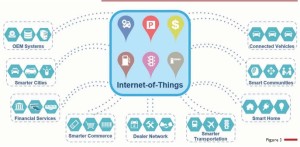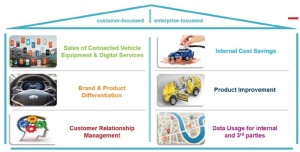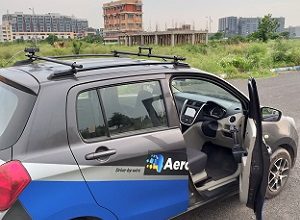Vehicle becomes a part of the Internet of Things (IoT)
Anupam Sharma
General Manager & Industry
Leader-Automotive & Electronics
IBM
Ever since the first Ford Model T rolled off the production line, man- kind has been obsessed about what the “car of the future” might look like. The car of the future will be increasingly intelligent, inter-connected and instrumented, in another word- Smarter. Cars will ultimately communicate, socialize and collaborate with other things, including other vehicles, traffic lights, parking bays and retailers, thereby be- coming a participant in a wider “system of systems”.
From a pure data point of view, the car itself is another ‘thing’ in the grand scheme of the Internet of Things (IoT) – just a node on a network. In the IoT, the car is literally a big data in motion problem. The connected car is likely to be- come the poster child of the IoT revolution because it is part of a wider system of systems (encompassing not only cars but also cities, physical infrastructure, retail, insurance and many others) and leverages key IoT enabling technologies, such as sensors, analytics, big data, natural language processing and cloud computing.
Connected cars will also bring forth an array of digital services created out of the vast amounts of data this connectivity will unleash. These digital services, many of which yet to be imagined, are likely to be highly disruptive to the auto industry. They will reinvent existing business models, create new models, change the auto ecosystem and redesign customer engagement and expectations. Along this journey, control points and profit pools will change, and economic value within the auto industry and across adjacent markets will alter.

The portfolio of connected of connected vehicles is enormous as indicated in figure 1 – Customer Profiling, Digital Marketing, Connected Navigation, Infotainment, Personal Health Monitoring, Concierge Services, Safety & Security, B2B Services, Smarter Cities, Fleet Management, Remote Access, Vehicle Care and Financial Services amongst others. Such services will create different benefits for automotive manufacturers as well as for their customers as indicated in Figure 2.

Today, IT platforms have matured with capability to securely capture vast amount of data and analyze in real time. It will assist automakers in turning driver and vehicle data into something tangible and useful in the modern business realm. This large quantum of data, now also termed as Big data is characterized by the tremendous volume, variety, velocity and veracity of data generated by a wide array of sources including vehicle sensor data, warranty claims and consumer sentiment data from multiple sources. Big data and analytics platforms are able to capture and integrate data-in-motion and data-at-rest for a single, integrated view of the vehicle.
Data collected from individual sensors- including environment insights, driving patterns and vehicle condition – as well as third-party information, such as traffic conditions and accident alerts, will be sent to the cloud and analyzed for the benefit of drivers and companies. One example is- provide automakers with real-time insight into how the various vehicle systems are performing under specific driving patterns and environmental conditions.
Data is fast becoming the world’s new natural resource. Those in the automotive industry that recognize this and seek ways to tap into the new natural resource will have an edge. Future control points in the auto industry will be defined by who can best leverage data to adapt and improvise business models, identify ways to engage old and new partners and materially enhance the customer experience.
However, the challenges for OEMs to successfully deliver Connected Vehicle Offerings are substantial and manifold Compelling Services, Customer Experience, Monetization, Security & Privacy, Legal & Regulations, Multiple Markets, New Entrants and Traditional Competitors. A layered approach to address the challenges from an integrated perspective is recommended, combining both business & technical aspects.

